Explore the latest news and find out what's on this month
Explore our learning offer for schools, families and community groups
Uncover the rich history of Elmbridge with our latest online exhibitions
Want to discover more about your local area?
Explore the latest news and find out what's on this month
Explore our learning offer for schools, families and community groups
Uncover the rich history of Elmbridge with our latest online exhibitions
Want to discover more about your local area?
As climate change continues, natural disasters are becoming more frequent. We can use the Museum collection to look back on how extreme weather has affected people in the past, and learn about how we can better prevent it today. The questions that students addressed in this section were:

By studying historic images of winter in the borough, it is evident that temperatures are gradually increasing as the years progress. Snowfall has become less frequent and the Thames now rarely freezes over.
Watercolour of 'Mrs. Cole's Cottage', Hersham. The dark picture shows the cottage with a tree in the front garden, both covered in snow. A woman is standing in the doorway.
Arthur Read (far left), Joseph Sassoon Sassoon (3rd left) and Louise Sassoon (4th left), skating on a frozen lake in winter. The location is unknown, but it is possibly the lake at Ashley Park, where the Sassoons lived, or the Broadwater in Weybridge.
How can we tell from this photo that it was a particularly cold winter?
A postcard of eight boys playing in deep snowfall in Pratts Lane, Hersham.
A postcard of the Broadwater in Weybridge, which is frozen over. Numerous people are pictured on the ice, including staff and patients of New Zealand Military Hospital at Mount Felix, Walton.
Marney’s Pond at Weston Green in winter, with 12 people on the ice and some on the bank. 'The Old Red House', a listed building which still stands today, is visible in the background.
Marney's Pond at Weston Green in winter, with people on the frozen water playing hockey. The Alma Arms and Jubilee Terrace are visible in the background.
Mallards and one swan walking on the frozen River Thames near Riverhouse Gardens, Walton.
What can this photo tell us about how changing weather conditions affect animal habitats?
Photograph of the River Thames near Walton Bridge, taken whilst the river was frozen.
Mr. Thorn and his brother-in-law, Mr. Mays, sitting on the ice in the middle of the River Thames above Shepperton Weir, both on folding wooden chairs.
From this and the previous image, we can work out that the Thames froze in both 1954 and 1962 – only 8 years apart.
Snow covering the platform and tracks at Claygate Station in winter, looking up the line north towards London.
What can this photograph tell us about the disruption that extreme weather can cause?
Elm Road, Claygate, in the snow.
What does this photo tell us about how extreme weather affects our daily lives and travel?
The Hare and Hounds pub, Claygate, in the snow.
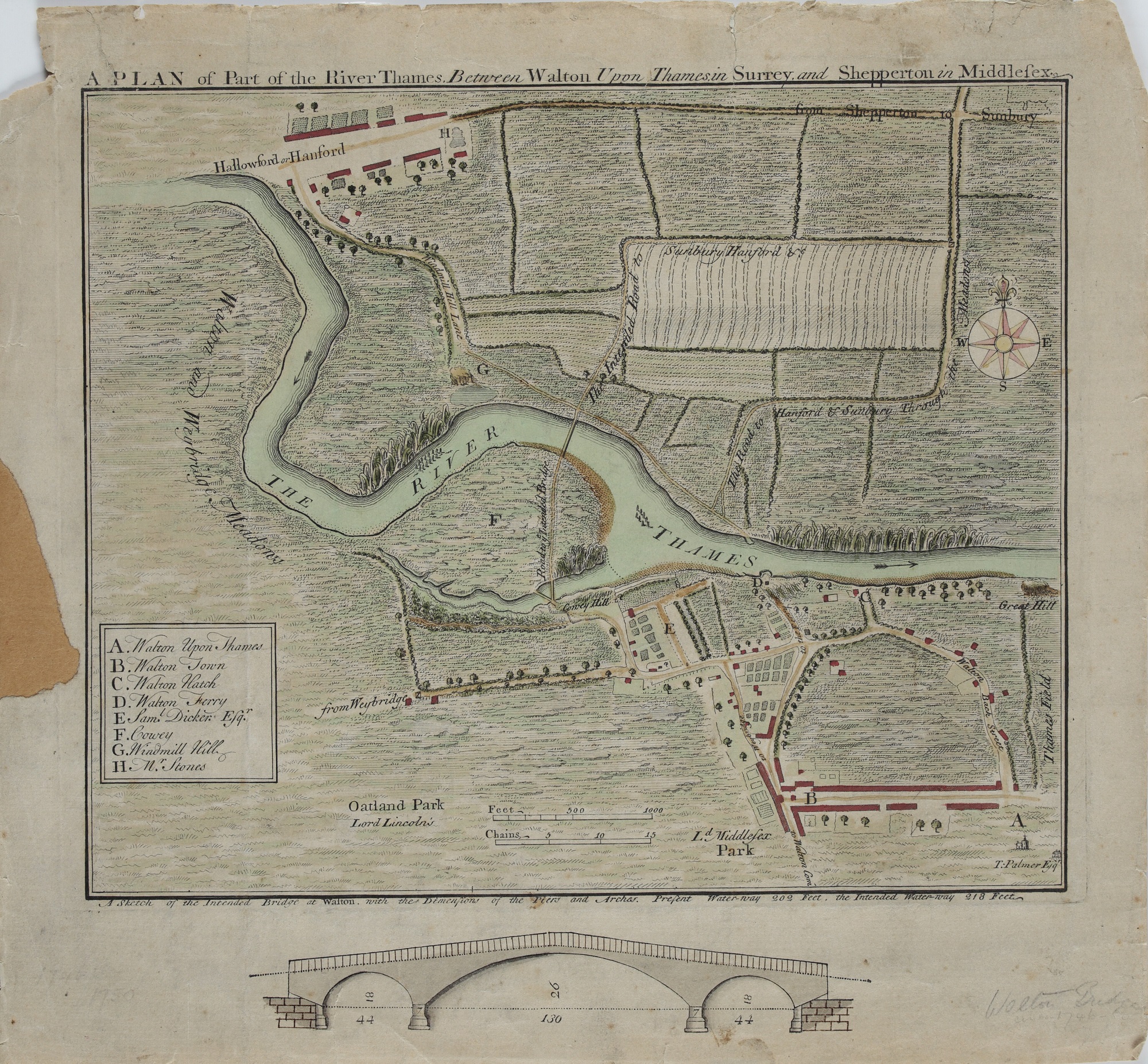 "Plan of part of the River Thames between Walton upon Thames in Surrey and Shepperton in Middlesex", c.1600s.
"Plan of part of the River Thames between Walton upon Thames in Surrey and Shepperton in Middlesex", c.1600s.
Storms and natural disasters have always posed a threat to humans, however, since the advent of climate change they have become more common and more severe.
We can date this plan to the 1600s, as the key refers to Samuel Dicker, who formerly owned the Mount Felix estate and built the first Walton Bridge. Fields surround the River Thames in the map, rather than the roads and houses of today which allow rainfall to run straight into the river rather than absorbing into more permeable ground.
When comparing this undeveloped floodplain to the built-up riverbanks of today, the plan helps us to understand why parts of Elmbridge are now so susceptible to flooding. The key questions students discussed here were:
How does climate change relate to storms and flooding?
What are the main reasons that storms and flooding might affect people’s lives, and why do we need to stop them happening so often?
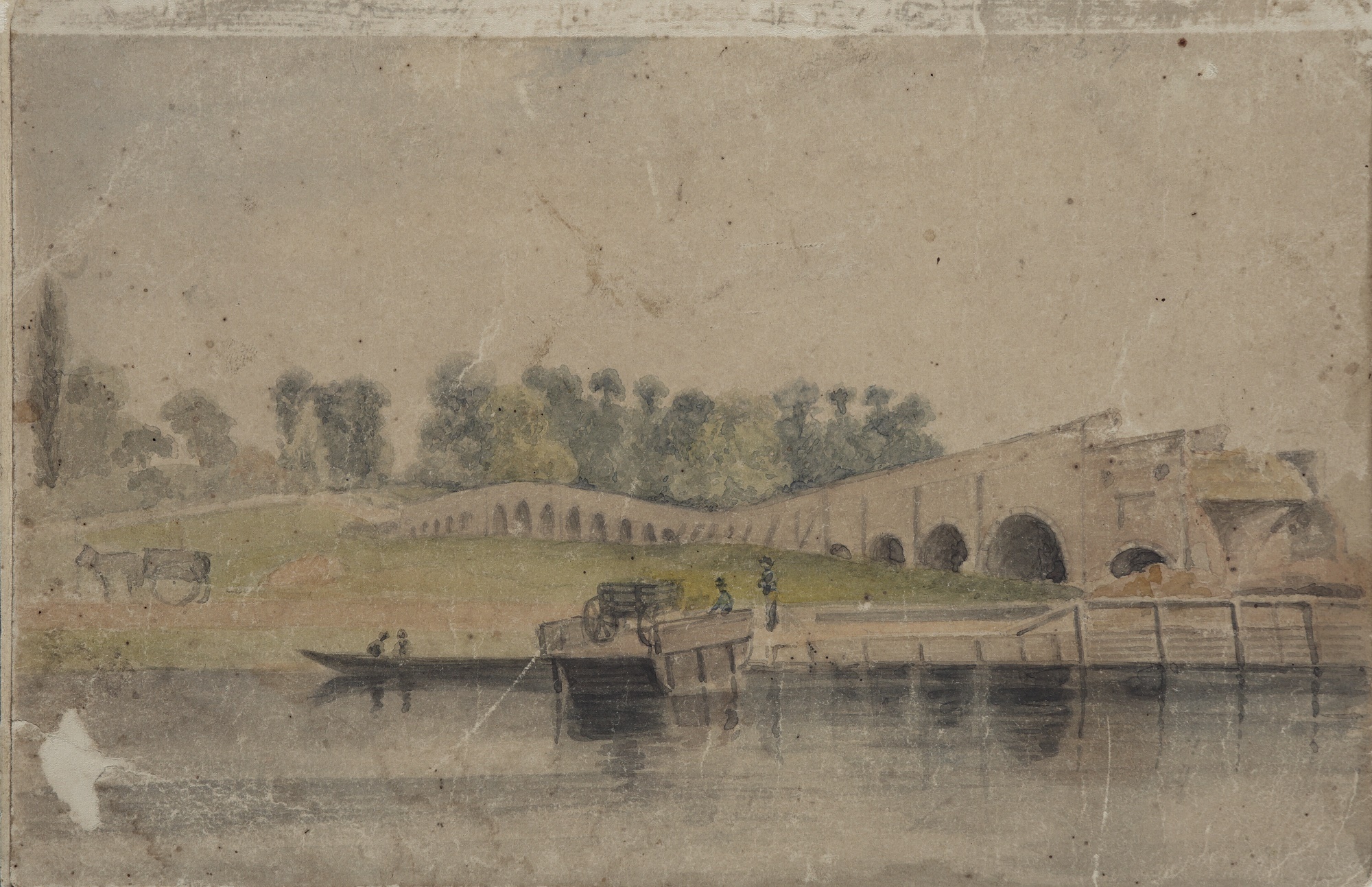 Watercolour of Walton Bridge, 1859. The central arches have been destroyed by a storm.
Watercolour of Walton Bridge, 1859. The central arches have been destroyed by a storm.
Storms and natural disasters have always posed a threat to humans, as demonstrated by this watercolour painting. It depicts Walton Bridge in 1859, after its central arches had been destroyed by a storm.
Since the advent of climate change, however, images such as this have become more common. In this section, students explored the flood events and natural disasters in Elmbridge’s history to find out how storm damage can affect local people’s lives, both in the past and in the future.
July 1968 had seen flooding across much of South West England, but the Great Flood that was to follow that September would have a far greater impact as one of the largest floods of the century. After heavy rainfall and storms in mid-September, many towns in South East England experiences severe flooding, including Elmbridge. Below are a selection of photographs taken during the Great Flood. The students used them to investigate the effects of flooding as it becomes a more common phenomenon.
Pedestrians in flood water in the Village High Street.
A mother and daughter holding hands outside an end-of-terrace house in Weston Avenue, with flood water in the street.
The number 206 Claygate bus, in flood water in Hampton Court Way. It was diverted from its normal route due to the road being impassable.
Vehicles in flood water on the junction of Hampton Court Way and Summer Road.
A row of shops in Walton Road with flood
water several inches high. Four children are
walking by the shops on the left.
Children playing in a flooded road.
Onlookers surrounding a flooded road.
Cars driving through floodwaters.
Children playing in floodwater in Hersham Road.
A person cycling through deep flood water on the road.
Pedestrians watching floodwater rise from a bridge over the river.
Fencing destroyed by rising floodwaters.
Flooding at Number 3 Brooklands Road, taken when the floodwater was still rising.
On the evening of the 15th-16th October 1987, the Great Storm saw hurricane-force winds of up to 120km/h hit the UK, leaving a trail of destruction and killing 18 people.
Many trees were blown down, which caused widespread damage to homes, transport links, and phone lines. Part of the reason for the severe damage was that the population was not prepared for the storm. They had been told by the Met Office that the evening would be windy, but that the full force of the storm would pass the UK by.
As climate change continues to produce extreme weather, natural disasters are becoming more widespread. In this section, students compared photos of the Great Storm to more recent natural disasters around the world to consider the effects of climate change.
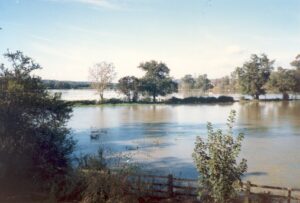
View from Downside Bridge, Cobham, the morning after the great storm on 16th October 1987 – looking south-west and showing the flooded fields.
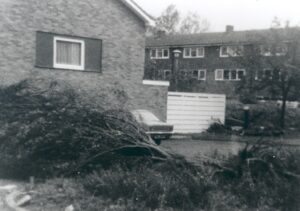
The Hurst Park Estate, East Molesey, after the Great Storm of October 1987.
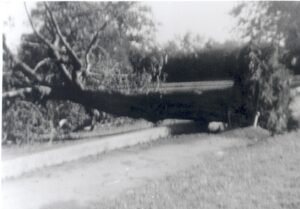
Fallen trees on the Hurst Park Estate, East Molesey, after the Great Storm of October 1987.
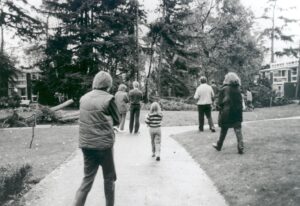
Crowds looking at a fallen cedar tree in Templemere, Weybridge, after the Great Storm of 1987.
‘Summer: Some animals aren’t used to hot climates. In summer, the weather gets really hot due to climate change. Ice caps melt!
Winter: If climate change continues, winters will get colder. There will be more floods and storms!
How can we help? We can help by doing simple things like: Savnig electricity; not littering.’
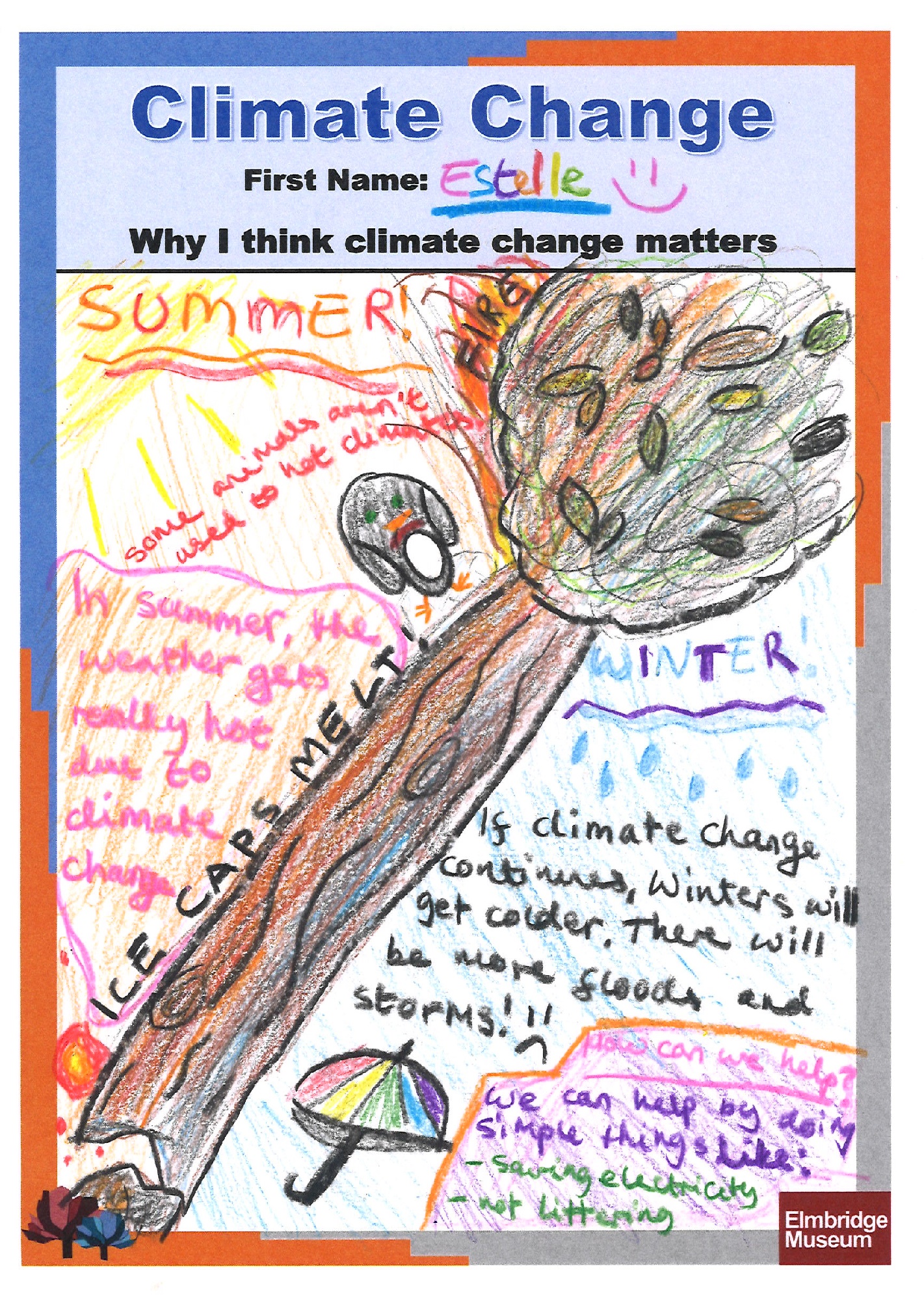
‘Floods! Frozen Lands. Littering! Extreme weather.’
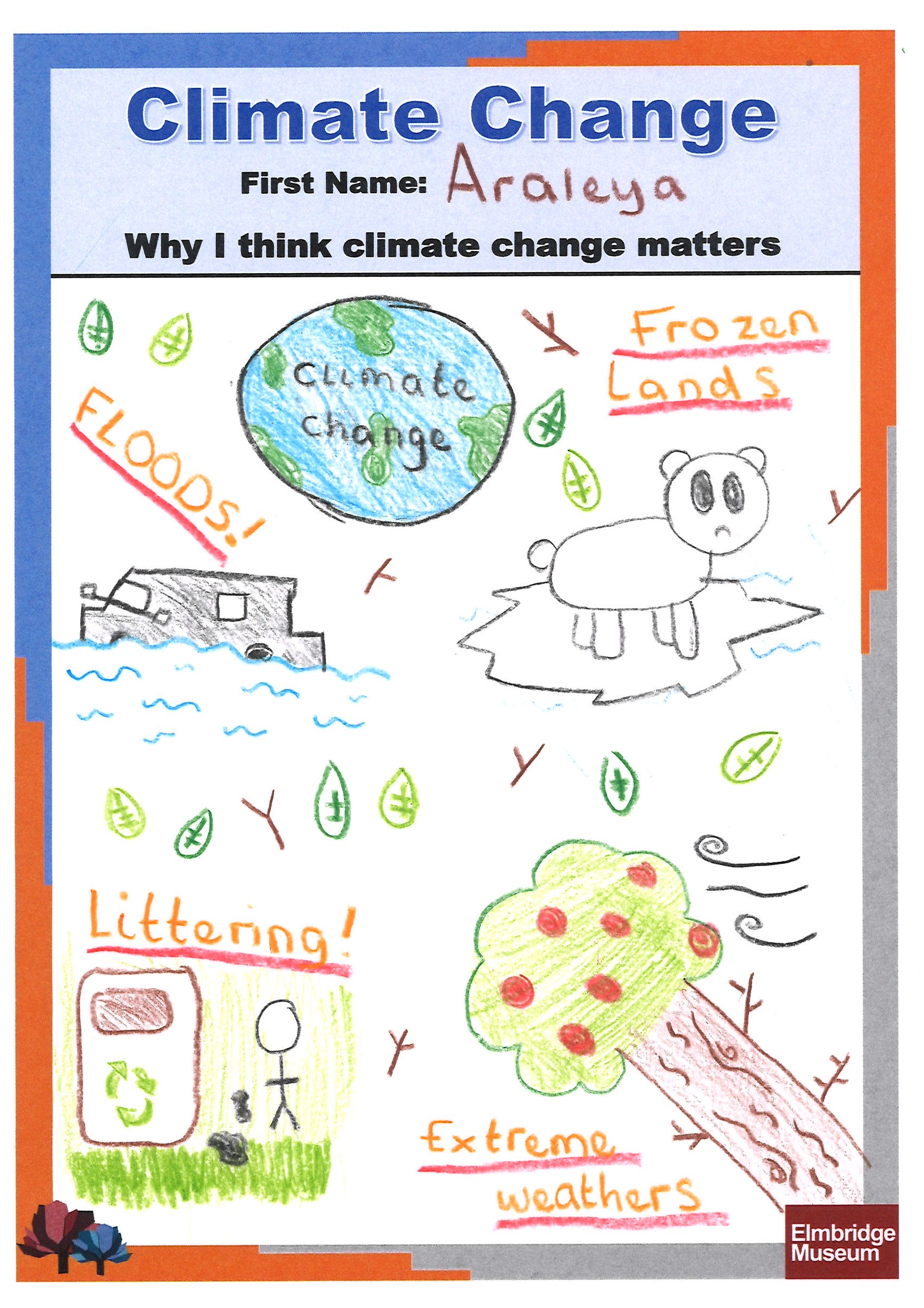
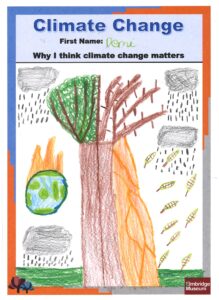
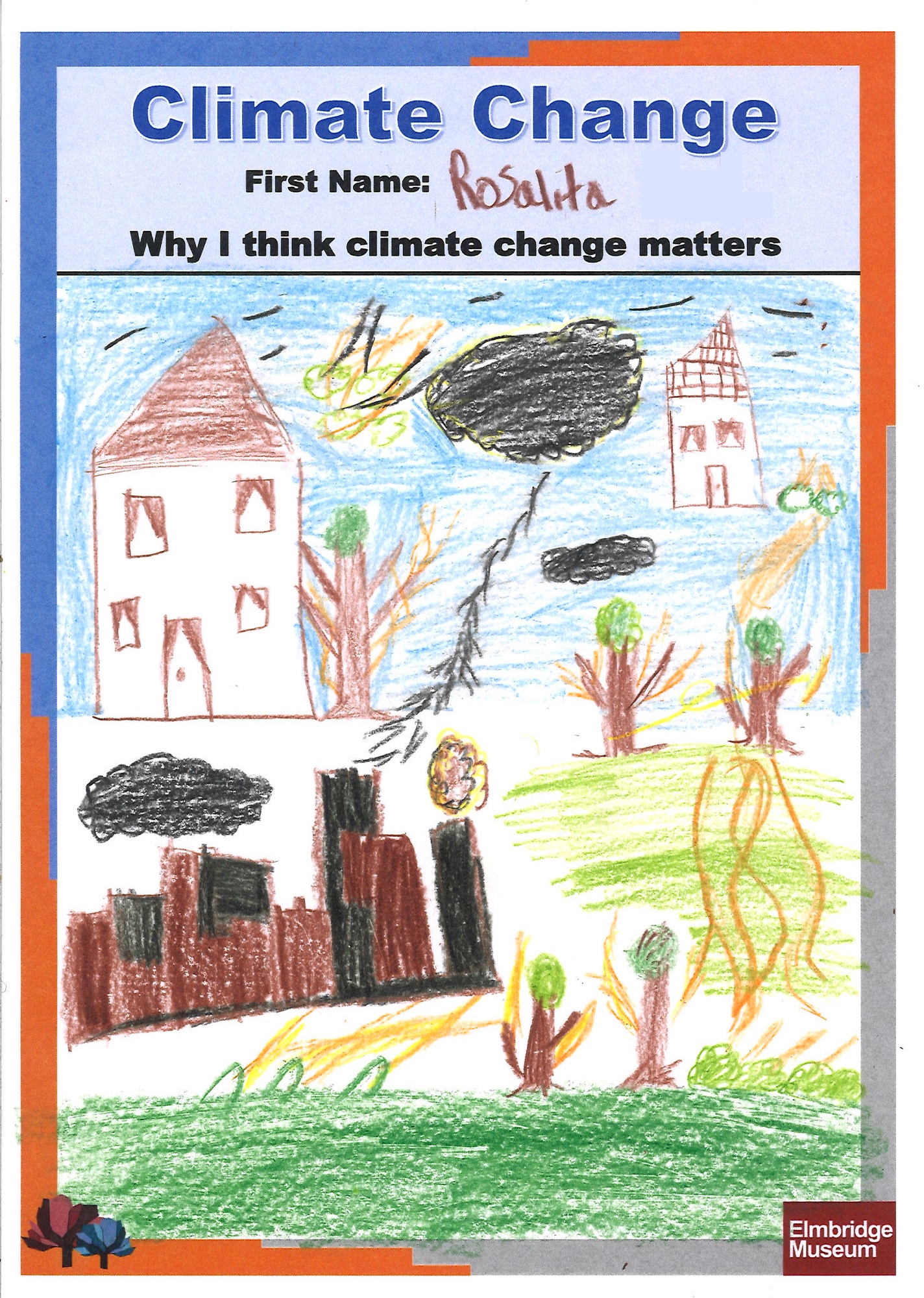
‘We can’t just stand here and watch our world crumble.’
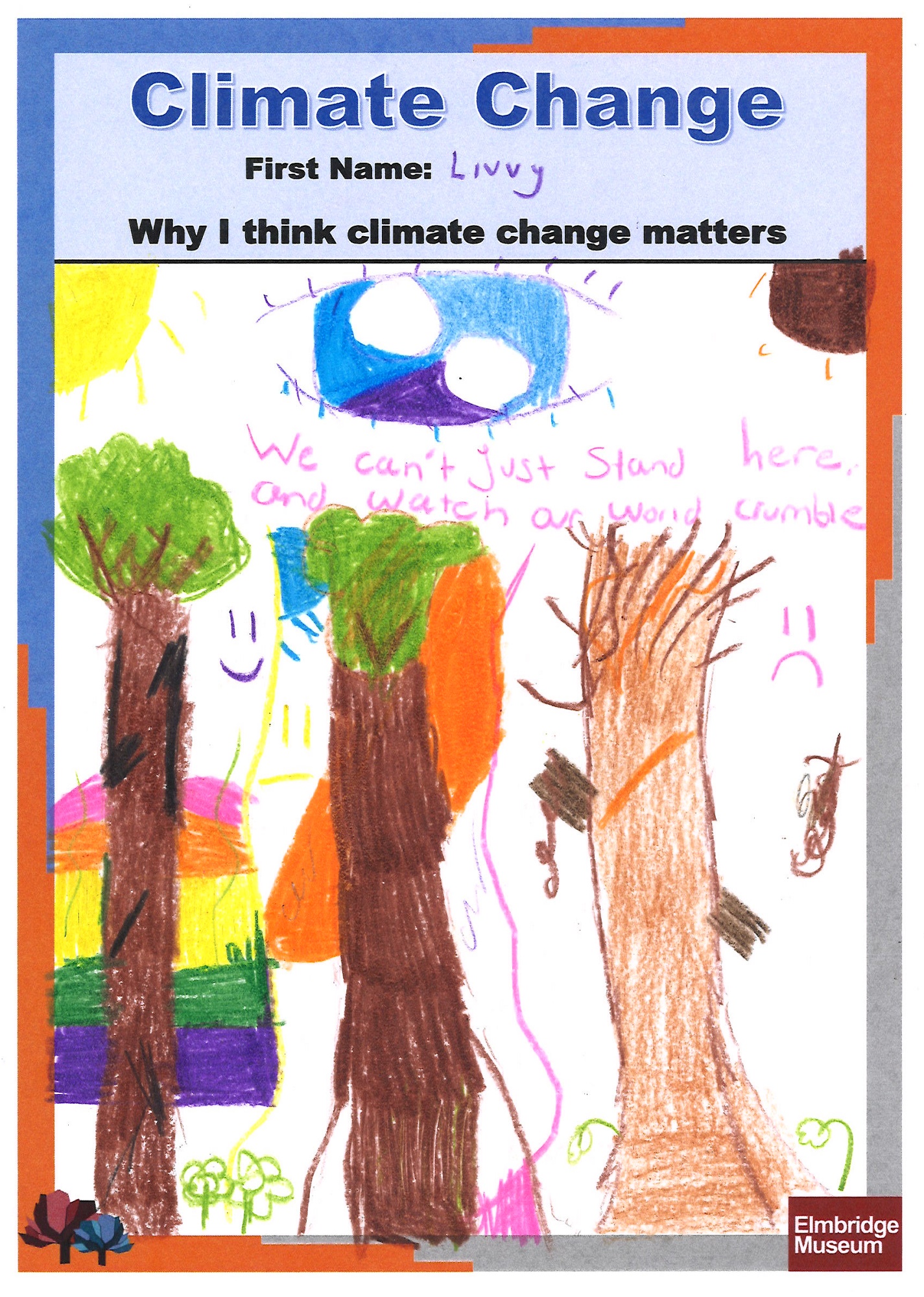
‘Save our planet, there is no planet B! We are destroying our planet. We need to act now!’
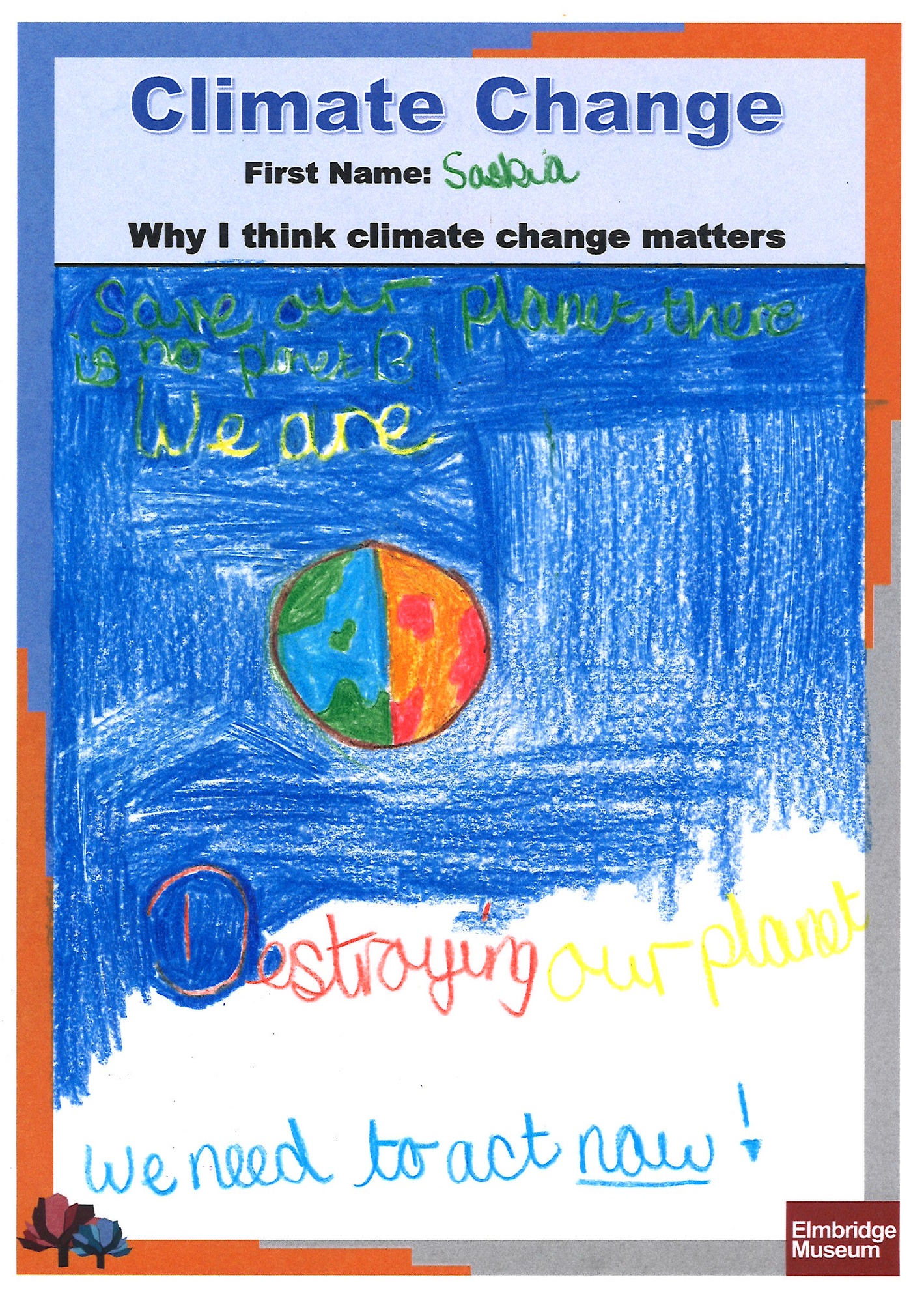
‘Stop climate change! Live in a pollution free world.’
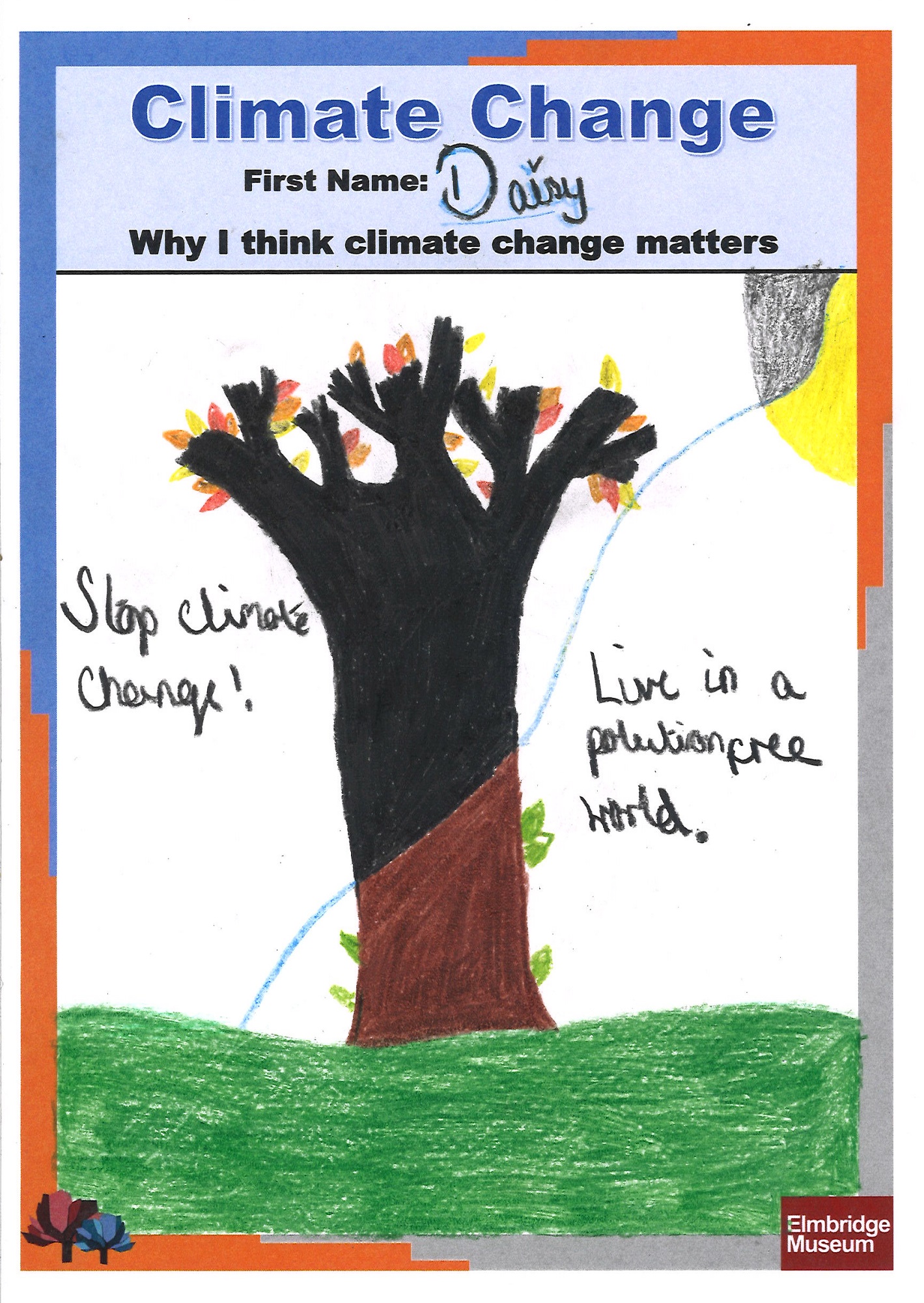
‘Help change us and the earth! Stop climate change! Global warming is a key but deathly thing to experience. It destroys our planet which will make a big imapact. Save the planet.’
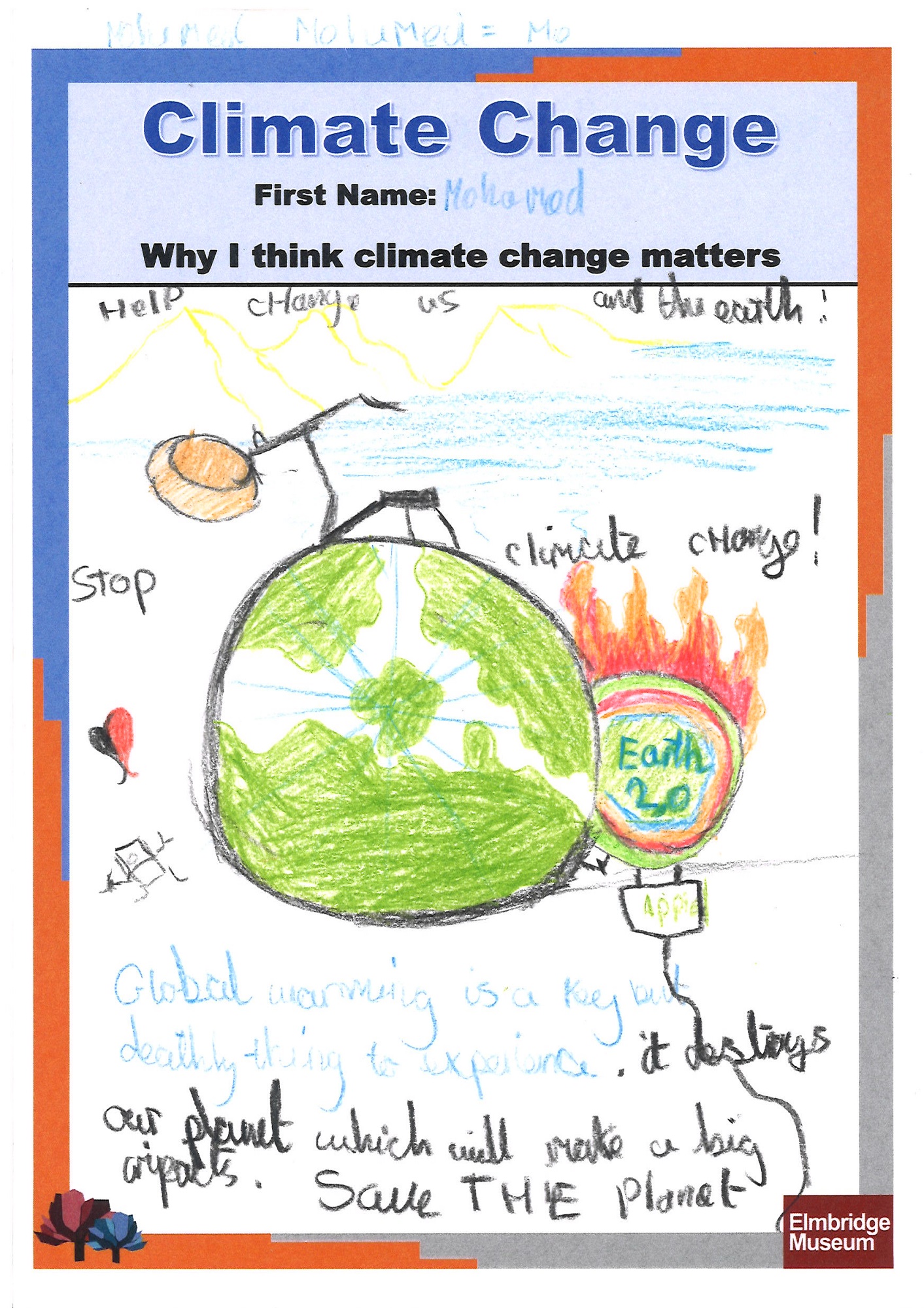
Leave a Comment
Share your thoughts on climate change and the local environment, or submit your own poster!You need to be logged in to comment.
Go to login / register